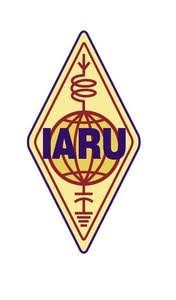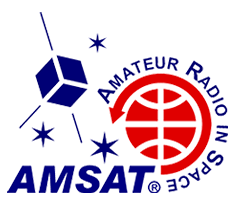ARRL letter van 13 augustus met bericht over de frequentie coordinatie
AMSAT Echoes IARU Satellite Coordination Concerns
AMSAT-NA has joined the International Amateur Radio Union (IARU) in expressing concern that some soon-to-be-launched satellites operating in Amateur Radio bands could cause conflicts in some ITU regions. In an August 7 statement on behalf of the IARU, Secretary Rod Stafford, W6ROD, said the IARU had become aware of plans to launch a series of satellites, “where the frequencies proposed appear to conflict with existing IARU band plans” in parts of the world.
“IARU is investigating how this has arisen, and is discussing the issues with the parties involved,” Stafford said. AMSAT-UK has reported that the IARU Satellite Coordinator was asked to look into the matter.
While Stafford did not name any specific satellites that may be of concern, AMSAT-UK has said that some frequencies proposed for the Chinese Amateur Radio Group (CAMSAT) XW-2/CAS-3 mission do not respect the internationally agreed-upon 2 meter band plan for IARU Region 1.
AMSAT-NA President Barry Baines, WD4ASW, told the ARRL that AMSAT’s initial excitement regarding the pending CAMSAT launch of nine Amateur Radio satellites has been tempered by concerns that some of the proposed amateur frequencies may not have been properly coordinated.
“While these frequencies are within the spectrum allocated for the Amateur Satellite Service, several will conflict with existing terrestrial allocations, as well as with the normal voice and SSTV downlink from the ISS,” Baines told ARRL. “We support the IARU’s effort to determine how the lack of coordination occurred, to mitigate the interference issues to the maximum amount possible, and to ensure that future amateur satellites will be coordinated in accord with established norms for the benefit of all.”
 In a related matter, also alluded to by Stafford, the operation of an existing satellite — the 14-year-old PCSAT (NO-44) — recently became a problem over Europe, when it began transmitting APRS on 144.390 MHz, due to technical issues related to its age. APRS on that frequency is not compatible with the Region 1 band plan. “This unfortunate circumstance appears to be unintentional,” Baines allowed in his comments to ARRL. “There are lessons to be learned in satellite design from this experience that will hopefully be followed in the future to mitigate such potential problems,” Baines added. Users have been asked not to digipeat via PCSAT while the satellite is over Europe.
In a related matter, also alluded to by Stafford, the operation of an existing satellite — the 14-year-old PCSAT (NO-44) — recently became a problem over Europe, when it began transmitting APRS on 144.390 MHz, due to technical issues related to its age. APRS on that frequency is not compatible with the Region 1 band plan. “This unfortunate circumstance appears to be unintentional,” Baines allowed in his comments to ARRL. “There are lessons to be learned in satellite design from this experience that will hopefully be followed in the future to mitigate such potential problems,” Baines added. Users have been asked not to digipeat via PCSAT while the satellite is over Europe.
With the support of the International Telecommunication Union (ITU), IARU volunteer satellite coordinators assign appropriate frequencies for satellites designed to operate on Amateur Radio frequencies. Stafford said these efforts have generally been successful, “allowing satellites to operate without undue interference to each other and to other services using the bands in question.” — Thanks to IARU, AMSAT, and AMSAT News Service

Plaats een Reactie
Meepraten?Draag gerust bij!